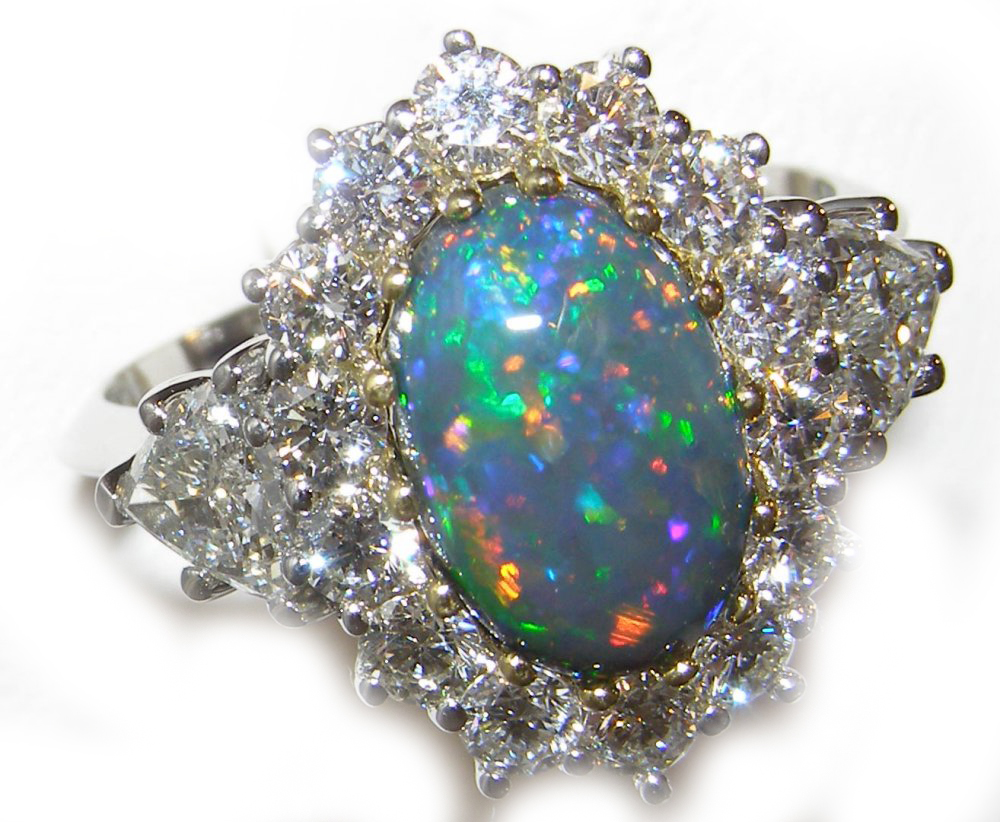
Precious opal is rare because the natural processes that create it rarely occur. Silica is one of the most common minerals on the planet, but precious opal is very rare – far more rare than diamonds. If you can afford to own a phone or a car, or even to buy a hamburger, you can afford an opal. Remember, though – not all opal is expensive: there’s an opal for everyone. So high-quality opal is costly and in fact, should be valued more highly than it is! Dozens of miners can work for months, using expensive machinery and spending tens of thousands of dollars on fuel, and between them find only a single fine opal, or perhaps a few. Opal is rare, and it is expensive to prospect and mine for. Opal is a precious gemstone, like rubies, emeralds or diamonds. The combination of pH and other chemical conditions required for opal formation is extremely specific and occurs only rarely in nature. Opal forms after water containing dissolved silica seeps into openings and cavities in rock or clay, then as the water slowly dries out, microscopic spheres of silica dioxide begin to form.

Common opal does contain tiny balls of silica dioxide, but they are irregular in shape, size and/or arrangement.

Common opal is typically grey, black, white or amber-coloured, but is also found in other hues. The great majority of opal does not show play of colour and is called common opal or potch. The tiniest spheres produce violet-coloured opal the largest, red, with sphere size increasing from the violet to the red end of the spectrum. This configuration creates lattices that diffract white light into different colours of the spectrum. In precious opal – the name given to opal with spectral colours, or 'play of colour' – the tiny spheres of silica dioxide are uniform in size and stacked in regular rows and layers. Opal is made of tiny spheres of silica dioxide - spheres so tiny they can only be seen using an electron microscope. Each location produces a distinctive opal type in the future, we will add photos and information about these to the Australian Opal Centre website. Opal is found in several other countries including Brazil, Mexico, Ethiopia, the United States, Canada, Peru, Indonesia, Honduras, Slovakia and the Czech Republic. In 1994, opal was declared Australia’s National Gemstone.

Australia is regarded as the world's leading source of opal and of the world's finest opal. Much of the world’s precious opal is mined in the harsh outback of Australia, where a unique combination of geological conditions permitted the formation of opal near the margins of an ancient inland sea. Like all fine things, gem opal is exceedingly rare. It boasts every colour of the visible spectrum, from deepest and clearest blues and greens to rippling golden orange through delicate pink and violet to rich turquoise, shocking vermilion, carmine and fuchsia - every colour imaginable.Īn opal may contain any or all of these colours, arrayed in wondrous patterns with names like harlequin, pinfire, Chinese writing, flower garden, mackerel sky, flagstone and rolling flash. Opal is the most magnificent of precious gemstones.


 0 kommentar(er)
0 kommentar(er)
